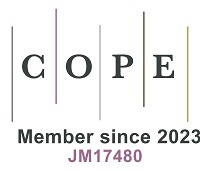REFERENCES
1. Allen, M. R.; Dube, O. P.; Solecki, W.; et al. Framing and context. 2018. Available from: https://www.ipcc.ch/site/assets/uploads/sites/2/2019/10/SR15_1SM_Low_Res.pdf [Last accessed on 23 Apr 2025].
2. IPCC. Climate change 2022 - impacts, adaptation and vulnerability: working group II contribution to the sixth assessment report of the intergovernmental panel on climate change. Cambridge, England: Cambridge University Press; 2023, p. 3056.
3. NITI Aayog. Reforms in urban planning capacity in India. New Delhi: NITI Aayog; 2021. Available from: https://www.niti.gov.in/sites/default/files/2021-09/UrbanPlanningCapacity-in-India-16092021.pdf [Last accessed on 23 Apr 2025].
4. United Nations. World Urbanization prospects: the 2018 revision. New York: United Nations; 2019. Available from: https://population.un.org/wup/assets/WUP2018-Report.pdf [Last accessed on 23 Apr 2025].
5. Mahadevia, D.; Advani, D. Gender differentials in travel pattern - the case of a mid-sized city, Rajkot, India. Transp. Res. Part. D. 2016, 44, 292-302.
6. UNDP. Addressing Gender Concerns in India’s Urban Renewal Mission. New Delhi: United Nations Development Programme; 2009. Available from: https://www.undp.org/sites/g/files/zskgke326/files/migration/in/addressinggenderconcerns.pdf [Last accessed on 23 Apr 2025].
7. Anand, A.; Tiwari, G. A gendered perspective of the shelter-transport-livelihood link: the case of poor women in Delhi. Transp. Rev. 2006, 26, 63-80.
8. World Bank. Global economic prospects 2005: trade, regionalism and development. Washington, DC: World Bank; 2005. Available from: https://openknowledge.worldbank.org/entities/publication/cf5511b6-919a-5cbf-9948-e7d70ea60853 [Last accessed on 23 Apr 2025].
10. Dhar, S.; Pathak, M.; Shukla, P. R. Transformation of India's transport sector under global warming of 2 °C and 1.5 °C scenario. J. Clean. Prod. 2018, 172, 417-27.
11. Godínez-Zamora, G.; Victor-Gallardo, L.; Angulo-Paniagua, J.; et al. Decarbonising the transport and energy sectors: technical feasibility and socioeconomic impacts in Costa Rica. Energy. Strategy. Rev. 2020, 32, 100573.
12. NITI Aayog. Comparison of decarbonisation strategies for India’s land transport sector: an inter model assessment. New Delhi: TERI; 2019. Available from: https://shaktifoundation.in/wp-content/uploads/2019/11/Intermodel-Study_Final-Report.pdf [Last accessed on 23 Apr 2025].
13. Munshi, T.; Shah, K.; Vaid, A.; et al. Promoting low carbon development in India, low-carbon comprehensive mobility plan: Rajkot. 2015.
14. Department for Transport. Decarbonising transport: a better, greener Britain. London; 2021. Available from: https://assets.publishing.service.gov.uk/media/610d63ffe90e0706d92fa282/decarbonising-transport-a-better-greener-britain.pdf [Last accessed on 23 Apr 2025].
15. Sharifi, A. Co-benefits and synergies between urban climate change mitigation and adaptation measures: a literature review. Sci. Total. Environ. 2021, 750, 141642.
16. Boyd, D.; Pathak, M.; Van Diemen, R.; Skea, J. Mitigation co-benefits of climate change adaptation: a case-study analysis of eight cities. Sustain. Cities. Soc. 2022, 77, 103563.
17. Roy, J.; Some, S.; Das, N.; Pathak, M. Demand side climate change mitigation actions and SDGs: literature review with systematic evidence search. Environ. Res. Lett. 2021, 16, 043003.
18. Das, D.; Kalbar, P. P.; Velaga, N. R. Pathways to decarbonize passenger transportation: implications to India’s climate budget. J. Clean. Prod. 2021, 295, 126321.
19. Mani, A.; Pai, M.; Aggarwal, R. Sustainable urban transport policy in India: focus on autorickshaw sector. Transp. Res. Rec. 2012, 2317, 104-10.
20. Verma, A.; Harsha, V.; Subramanian, G. H. Evolution of urban transportation policies in India: a review and analysis. Transp. Dev. Econ. 2021, 7, 136.
21. Hickman, R.; Hall, P.; Banister, D. Planning more for sustainable mobility. J. Transp. Geogr. 2013, 33, 210-9.
22. Buckle, S.; Mirabile, M.; Jaber, A.; et al. Integrated policies for climate, air, ecosystems, energy and transport. In: Systemic thinking for policy making: the potential of systems analysis for addressing global policy challenges in the 21st century. OECD; 2020, pp. 44-53.
23. World Bank Group. Closing the gap: gender, transport, and employment in Mumbai; 2021. Available from: https://openknowledge.worldbank.org/bitstream/handle/10986/35248/Closing-the-Gap-Gender-Transport-and-Employment-in-Mumbai.pdf?sequence=1&isAllowed=y [Last accessed on 23 Apr 2025].
24. Singh, D. R.; Mishra, S.; Tripathi, K. Analysing acceptability of E-rickshaw as a public transport innovation in Delhi: a responsible innovation perspective. Technol. Forecast. Soc. Chang. 2021, 170, 120908.
25. Wismans, J.; Grahn, M.; Denbratt, I. Low-carbon transport - health and climate benefits. 2016. Available from: https://publications.lib.chalmers.se/records/fulltext/233671/233671.pdf [Last accessed on 23 Apr 2025].
26. World Health Organization (WHO). Ambient (outdoor) air pollution; 2022. Available from: https://www.who.int/news-room/fact-sheets/detail/ambient-(outdoor)-air-quality-and-health [Last accessed on 23 Apr 2025].
27. IQAir. 2019 world air quality report: region & city PM2.5 ranking; 2019. Available from: https://www.iqair.com/dl/pdf-reports/2019-World-Air-Report-V8-20200318.pdf [Last accessed on 23 Apr 2025].
28. World Health Organization (WHO). Global status report on road safety 2018. World Health Organization; 2018. Available from: https://www.who.int/publications-detail-redirect/9789241565684 [Last accessed on 23 Apr 2025].
29. Macmillan, A.; Smith, M.; Witten, K.; et al. Suburb-level changes for active transport to meet the SDGs: causal theory and a New Zealand case study. Sci. Total. Environ. 2020, 714, 136678.
30. Ramirez-Rubio, O.; Daher, C.; Fanjul, G.; et al. Urban health: an example of a “health in all policies” approach in the context of SDGs implementation. Global. Health. 2019, 15, 87.
32. Bhatt, A.; Menon, R.; Khan, A. Women’s safety in public transport: a pilot initiative in Bhopal. The WRI Ross Center for Sustainable Cities; 2015. Available from: https://www.wricitiesindia.org/sites/default/files/Women%27s%20Safety.pdf [Last accessed on 23 Apr 2025].
33. SUTP. SUTP module 7a - approaches for gender responsive urban mobility: gender and urban transport - smart and affordable. GIZ-SUTP; 2018. Available from: https://sutp.org/publications/approaches-for-gender-responsive-urban-mobility-gender-and-urban-transport-smart-and-affordable/ [Last accessed on 23 Apr 2025].
34. Shah, S.; Raman, A. What do women and girls want from urban mobility systems. OLA Mobility Institute; 2019. Available from: https://olawebcdn.com/ola-institute/ola_women_and_mobility.pdf [Last accessed on 27 Apr 2025].
35. Petti, L.; Trillo, C.; Makore, B. N. Cultural heritage and sustainable development targets: a possible harmonisation? Insights from the European perspective. Sustainability 2020, 12, 926.
36. Shaji, K. A. Why Kerala’s silver line project is a budding environmental disaster. science - the wire; 2021. Available from: https://science.thewire.in/politics/government/why-keralas-silver-line-project-is-a-budding-environmental-disaster/ [Last accessed on 23 Apr 2025].
37. Barman, S. R. 6,961 trees to make way for Delhi Metro corridor, proposal gets SC panel nod. The Indian Express; 2021. Available from: https://indianexpress.com/article/cities/delhi/6961-trees-to-make-way-for-delhi-metro-corridor-proposal-gets-sc-panel-nod-7451228/ [Last accessed on 23 Apr 2025].
38. Tiwari, G.; Phillip, C. Development of public transport systems in small cities: a roadmap for achieving sustainable development goal indicator 11.2. IATSS. Res. 2021, 45, 31-8.
39. Leather, J.; Fabian, H.; Gota, S.; Mejia, A. Walkability and pedestrian facilities in Asian cities - state and issues. ADB Sustainable Development Working Paper Series; 2011. Available from: https://www.adb.org/sites/default/files/publication/28679/adb-wp17-walkability-pedestrian-facilities-asian-cities.pdf [Last accessed on 23 Apr 2025].
40. Economic Times. Surat to be world's fastest growing city during 2019-35: report; 2018. Available from: https://economictimes.indiatimes.com/news/politics-and-nation/surat-to-be-worlds-fastest-growing-city-during-2019-35-report/articleshow/66991793.cms?from=mdr [Last accessed on 23 Apr 2025].
41. CRDF. Comprehensive mobility plan for Surat. Surat Municipal Corporation; 2018. Available from: https://crdf.org.in/project/comprehensive-mobility-plan-for-surat [Last accessed on 23 Apr 2025].
42. Jain, D.; Tiwari, G. Promoting low carbon transport in India - NMT infrastructure in India: investment, policy and design; 2013. Available from: https://www.uncclearn.org/resources/library/promoting-low-carbon-transport-in-india-nmt-infrastructure-in-india-investment-policy-and-design/ [Last accessed on 23 Apr 2025].
43. Sharma, S.; Gandhi, P.; Roy, A. K. Lean management based sustainable transport system for Surat metropolitan area in the context of industrial development. JTTE 2017, 5, 147-56.
44. Agarbattiwala, T.; Bhatt, B. Performance analysis of BRT system Surat. Int. J. Eng. Res. 2016, 5, 519-23.
45. United Nations Environment Programme (UNEP). The emissions gap report 2015. Accessible from: https://wedocs.unep.org/bitstream/handle/20.500.11822/32070/EGR15.pdf?sequence=1&isAllowed=y [Last accessed on 27 Apr 2025].
46. Schweizer, V. J.; Kriegler, E. Improving environmental change research with systematic techniques for qualitative scenarios. Environ. Res. Lett. 2012, 7, 044011.
47. Waisman, H.; Bataille, C.; Winkler, H.; et al. A pathway design framework for national low greenhouse gas emission development strategies. Nat. Clim. Chang. 2019, 9, 261-8.
48. International Labour Organization. Labor force participation rate, female (% of female population ages 15+) (modeled ILO estimate) - Sri Lanka. 2022. Available from: https://data.worldbank.org/indicator/SL.TLF.CACT.FE.ZS?locations=LK [Last accessed on 23 Apr 2025].
49. Chakraborty, S.; Kumar, N. M.; Jayakumar, A.; Dash, S. K.; Elangovan, D. Selected aspects of sustainable mobility reveals implementable approaches and conceivable actions. Sustainability 2021, 13, 12918.
50. Prabhu, A.; Pai, M. Buses as low-carbon mobility solutions for urban India: evidence from two cities. Transp. Res. Rec. 2012, 2317, 15-23.
51. Bresciani, C.; Colorni, A.; Costa, F.; Luè, A.; Studer, L. Carpooling: facts and new trends. In: 2018 International Conference of Electrical and Electronic Technologies for Automotive. IEEE; 2018. p. 1-4.
52. NITI Aayog. Moving forward together: enabling shared mobility in India; 2018. Available from: https://www.niti.gov.in/sites/default/files/2023-02/Shared-mobility.pdf [Last accessed on 23 Apr 2025].
53. Zubelzu, S.; Álvarez, R. A simplified method to assess the influence of the power generation mix in urban carbon emissions. Energy 2016, 115, 875-87.
54. Gazette of India. Vehicle scrapping policy, CG-DL-E-18032021-225972, PART II -Section 3 - Sub-section (i); 2021. Available from: https://morth.nic.in/sites/default/files/notifications_document/RVSF%20Notification.pdf [Last accessed on 23 Apr 2025].
55. Hodge, C.; Jeffers, M. J.; Desai, J.; Miller, E.; Shah, V. Surat municipal corporation bus electrification assessment. Golden, CO: National Renewable Energy Laboratory; 2019. Available from: https://www.nrel.gov/docs/fy19osti/73600.pdf [Last accessed on 23 Apr 2025].
56. KPMG. Shifting gears: the evolving electric vehicle landscape in India; 2020. Available from: https://www.lightson.news/content/files/content/dam/kpmg/in/pdf/2020/10/electric-vehicle-mobility-ev-adoption.pdf [Last accessed on 23 Apr 2025].
57. UNFCCC, GIZ, ICCT. Compendium on greenhouse gas baselines and monitoring: passenger and freight transport; 2018. Available from: https://unfccc.int/sites/default/files/resource/UNFCCC%20Compendium%20Transport%20Revised.pdf [Last accessed on 23 Apr 2025].
58. Zhang, S.; Zhao, J. Low-carbon futures for Shenzhen’s urban passenger transport: a human-based approach. Transp. Res. Part. D. 2018, 62, 236-55.
59. ARAI. Indian emissions regulations; 2021. Available from: https://www.araiindia.com/pdf/Indian_Emission_Regulation_Booklet.pdf [Last accessed on 23 Apr 2025].
60. Ghate, A. T.; Qamar, S. Carbon footprint of urban public transport systems in Indian cities. Case. Stud. Transp. Policy. 2020, 8, 245-51.
61. Bataille, C.; Waisman, H.; Colombier, M.; Segafredo, L.; Williams, J. The deep decarbonization pathways project (DDPP): insights and emerging issues. Clim. Policy. 2016, 16, S1-6.
62. Ministry of New and Renewable Energy. Annual report 2020-21. New Delhi: Ministry of New and Renewable Energy; 2021. Available from: https://mnre.gov.in/en/annual-reports-2020-21-2/ [Last accessed on 23 Apr 2025].
63. Ministry of Power. Annual report 2020-21. New Delhi: Ministry of Power; 2021. Available from: https://powermin.gov.in/sites/default/files/uploads/MOP_Annual_Report_Eng_2020-21.pdf [Last accessed on 23 Apr 2025].
64. Nilsson, M.; Griggs, D.; Visbeck, M. Policy: map the interactions between sustainable development goals. Nature 2016, 534, 320-2.
65. Fader, M.; Cranmer, C.; Lawford, R.; Engel-Cox, J. Toward an understanding of synergies and trade-offs between water, energy, and food SDG targets. Front. Environ. Sci. 2018, 6, 112.
66. Hernández-Orozco, E.; lobos-Alva, I.; Cardenas-Vélez, M.; Purkey, D.; Nilsson, M.; Martin, P. The application of soft systems thinking in SDG interaction studies: a comparison between SDG interactions at national and subnational levels in Colombia. Environ. Dev. Sustain. 2022, 24, 8930-64.
67. Ministry of Housing and Urban Affairs (MOHUA). Service level benchmark in urban transport for Indian cities; 2013. Available from: https://mohua.gov.in/upload/uploadfiles/files/VoulmeI_Methodologyreport_final03.pdf [Last accessed on 23 Apr 2025].
68. Ministry of Urban Development (MoUD). Study on traffic and transportation policies and strategies in urban areas in India. New Delhi: Wilbur Smith Associates; 2008. Available from: https://mohua.gov.in/upload/uploadfiles/files/final_Report.pdf [Last accessed on 23 Apr 2025].
69. Padeiro, M.; Louro, A.; da, Costa. N. M. Transit-oriented development and gentrification: a systematic review. Transp. Rev. 2019, 39, 733-54.
70. Reddy, B. S. Urban transportation in India: a tale of two cities. Energy. Sustain. Dev. 2000, 4, 65-76.
71. Banerjee-Guha, S. Developing public transport in Indian cities: towards a sustainable future. In: Low N, Gleeson B, editors. Making urban transport sustainable. London: Palgrave Macmillan UK; 2003. pp. 165-83.
72. Srinivasan, S.; Rogers, P. Travel behavior of low-income residents: studying two contrasting locations in the city of Chennai, India. J. Transp. Geogr. 2005, 13, 265-74.
73. Tiwari, G. Urban transport priorities: meeting the challenge of socio-economic diversity in cities, a case study of Delhi, India. Cities 2002, 19, 95-103.
74. Arioli, M.; Fulton, L.; Lah, O. Transportation strategies for a 1.5 °C world: a comparison of four countries. Transp. Res. Part. D. 2020, 87, 102526.








